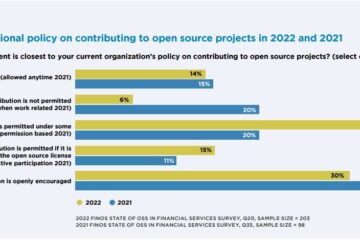
Image by Freepik
API stands for Application Programming Interface. This is a set of protocols, routines, and tools that enable software applications to communicate with each other.
What are APIs?
In simpler terms, an API is a messenger that takes requests and returns responses between different software systems.
APIs provide developers with a way to access the functionality of one software system from another, without having to know the details of how that system works internally.
APIs are typically built using web technologies, such as HTTP and XML, and are commonly used in web development and software engineering.
How do APIs Work?
They allow developers to build software that can interact with other software and services, making it possible to create more complex and integrated systems.
APIs can also be used to expose functionality to third-party developers, allowing them to build applications that leverage the features of a particular service or platform.
APIs can work in a variety of ways, but the most common method is through a request-response cycle. A client sends a request to an API endpoint, which is processed by the API server, and then returns a response back to the client. The response can be in a variety of formats, including JSON, XML, or HTML.
APIs can also use different types of authentication mechanisms to ensure that only authorized users can access the API. This can include using API keys, OAuth tokens, or other forms of authentication.
Overall, APIs are an essential part of modern software development and enable developers to build more powerful and interconnected applications.
How APIs are Used in Web Development and Software Engineering
APIs are used in a variety of ways in web development and software engineering.
APIs in Web Development

Image by Freepik
They can be used to integrate different systems and services, expose functionality to third-party developers, or create more complex and dynamic user experiences.
One common use of APIs in web development is to integrate third-party services into a web application. For example, a website might use the Google Maps API to display maps and location-based information.
APIs can also be used to integrate with social media platforms, such as the Twitter or Facebook APIs, to allow users to share content or log in to an application using their social media accounts.
APIs can also be used to create more dynamic user experiences. For example, a website might use the YouTube API to embed videos directly on a page or use the Spotify API to play music within an application.
APIs in Software Engineering
In software engineering, APIs are used to create more modular and reusable code.
By exposing functionality through an API, developers can build components that can be used across different applications or services. This can help reduce development time and improve code quality, as well as make it easier to maintain and update software systems.
Overall, APIs are a powerful tool in web development and software engineering, enabling developers to build more complex and integrated applications.
The Different Types of APIs: RESTful APIs and SOAP APIs
There are many different types of APIs, but two of the most common are RESTful APIs and SOAP APIs.
RESTful APIs
REST, or Representational State Transfer, is an architectural style for building web services.
RESTful APIs use HTTP methods, such as GET, POST, PUT, and DELETE, to access and manipulate resources. Each resource is identified by a unique URL, and data is typically returned in JSON or XML format.
SOAP APIs
SOAP, or Simple Object Access Protocol, is a protocol for exchanging structured information between web services. SOAP APIs use XML to encode messages and rely on a set of standards for exchanging information, such as the Web Services Description Language (WSDL) and the Simple Object Access Protocol (SOAP).
While both RESTful and SOAP APIs can be used to build web services, RESTful APIs are generally considered to be more flexible and easier to use. RESTful APIs also tend to be more lightweight and scalable, making them a popular choice for building modern web applications.
Best Practices for Designing and Developing APIs for Scalability and Performance

Image by Freepik
Designing and developing APIs requires careful consideration of scalability and performance.
Here are some best practices to follow:
- Keep it Simple: Design your API to be simple and intuitive. Use standard HTTP methods and response codes and limit the number of endpoints.
- Consider Caching: Use caching to improve performance by storing frequently accessed data in memory.
- Plan for Scalability: Use horizontal scaling techniques to ensure your API can handle increased traffic. This can include using load balancers, caching, and database sharing.
- Optimize Database Queries: Optimize your database queries to reduce load times and improve performance.
- Use Asynchronous Processing: Use asynchronous processing to improve performance by offloading processing tasks to a background thread or server.
- Document Your API: Make sure to document your API thoroughly, including endpoints, parameters, response codes, and error messages.
- Version Your API: Version your API to allow for changes and updates while maintaining backward compatibility for existing clients.
By following these best practices, you can ensure that your API is scalable and performs well, even as your user base grows.
The Benefits of Using APIs
- Increased Productivity and Improved User Experiences: Using APIs offers many benefits to developers and users, including increased productivity and improved user experiences.
- Faster Development: By leveraging existing APIs, developers can save time and effort by not having to build everything from scratch.
- Integration with Existing Systems: APIs allow developers to integrate new applications and services with existing systems, making it easier to build more complex and integrated systems.
- Improved User Experiences: APIs can be used to create more dynamic and personalized user experiences, such as embedding videos or displaying location-based information.
- Access to Data: APIs can provide developers with access to data from other services and platforms, such as social media data or weather data.
- Increased Efficiency: APIs can automate tasks and streamline workflows, increasing efficiency and reducing manual labor.
Overall, using APIs can help developers build more powerful and integrated applications, while also improving the user experience.
Examples of Popular APIs: Google Maps API and the Twitter API
There are many popular APIs available for developers to use, including the Google Maps API and the Twitter API.
The Google Maps API allows developers to add maps and location-based information to their applications. This can include displaying maps, calculating routes, and searching for nearby places.
The Twitter API allows developers to access and interact with Twitter data, including tweets, hashtags, and user profiles. This can be used to create custom Twitter applications, or to integrate Twitter data into existing applications.
Other popular APIs include the Facebook API, the YouTube API, and the Amazon Web Services API.
How to Integrate APIs into Your Web Application or Software Project

Image by Freepik
Integrating APIs into your web application or software project can be done in several ways:
- Using SDKs or Libraries: Many APIs provide SDKs or libraries for different programming languages, making it easier to integrate them into your project.
- RESTful APIs: RESTful APIs can be accessed using standard HTTP requests, making it easy to integrate them into web applications.
- Webhooks: Webhooks can be used to receive real-time updates from APIs, allowing you to respond to events as they occur.
- OAuth: OAuth can be used to authenticate users and grant access to APIs, allowing you to control who can access your API.
The above methods guide you to integrate APIs into your web application or software project.
The Importance of API Documentation and How to Create Effective Documentation for Your API
API documentation is critical for helping developers understand how to use your API. Here are some tips for creating effective API documentation:
- Use Clear and Concise Language: Use clear and concise language to describe each endpoint, parameter, and response code. Make sure that your documentation is easy to understand and follow.
- Provide Examples: Provide examples of how to use each endpoint, including sample requests and responses. This can help developers understand how to use your API more effectively.
- Keep It Up to Date: Make sure to keep your documentation up to date as you make changes to your API. This can help prevent confusion and errors when using your API.
- Use a Standard Format: Use a standard format for your documentation, such as Open API or Swagger. This can make it easier for developers to integrate your API into their projects.
Ultimately, you can create effective documentation for your API that can help developers use it more effectively.
Security Considerations When Using and Developing APIs, Including Authentication and Access Control

Image by Freepik
Security is a critical consideration when using and developing APIs. Here are some security considerations to keep in mind:
- Use HTTPS: Use HTTPS to encrypt data sent between the client and server. This can help prevent data breaches and man-in-the-middle attacks.
- Use Authentication: Use authentication to verify the identity of the user accessing your API. This can help prevent unauthorized access and protect sensitive data.
- Use Access Control: Use access control to restrict access to certain endpoints and resources. This can help prevent unauthorized access and protect sensitive data.
- Use Rate Limiting: Use rate limiting to limit the number of requests that can be made to your API over a period. This can help prevent denial-of-service attacks and improve performance.
Security considerations, you protect your APIs and the data they access.
You can take it a step further and secure your source code. This is the motivation behind DevSecOps. You embed security in your DevOps processes (CI/CD, and SDLC).
Tips for Troubleshooting Common Issues When Working with APIs

Image by Freepik
Working with APIs can sometimes result in issues or errors. Here are some tips for troubleshooting common issues:
- Check the API Documentation: Check the API documentation to make sure that you are using the correct endpoints, parameters, and response codes.
- Check for Errors: Check for errors in your code or requests, such as incorrect syntax or missing parameters.
- Check the API Status: Check the API status to see if there are any known issues or downtime.
- Test Your Code: Test your code in a controlled environment to see if the issue is specific to your code or a more general issue with the API.
Troubleshooting and resolving common issues when working with APIs is an essential part of API management.
How to Use API Analytics to Measure Usage and Performance and Make Data-Driven Decisions

Image by Freepik
API analytics can help you measure usage and performance and make data-driven decisions. Here are some tips for using API analytics:
- Track Usage: Track usage metrics, such as the number of requests made, the number of active users, and the types of requests being made.
- Monitor Performance: Monitor performance metrics, such as response times, error rates, and latency.
- Analyze User Behavior: Analyze user behavior to understand how users are using your API and identify any patterns or trends.
- Make Data-Driven Decisions: Use the data you collect to make data-driven decisions about how to improve your API and meet the needs of your users.
By using API analytics, you can gain insights into how your API is being used and make data-driven decisions to improve performance and meet the needs of your users.
The future of APIs and emerging trends: micro-services and serverless computing.
The future of APIs is exciting, and it is constantly evolving as new technologies emerge.
One of the most significant trends in API development is the shift towards micro-services and serverless computing.
What are Micro-services?
Micro-services are an architectural approach to building software applications that involves breaking down a monolithic application into smaller, independent services that can communicate with each other via APIs.
This approach allows developers to build and maintain software applications more easily, as each service can be developed, tested, and deployed independently.
Micro-services also offer better scalability and flexibility, as individual services can be scaled up or down depending on the workload.
What is Serverless Computing?
Serverless computing, on the other hand, is a model where the cloud provider takes care of the infrastructure required to run the code, and developers only need to worry about writing the code.
Serverless computing is becoming increasingly popular because it offers better scalability, lower costs, and faster time to market.
APIs are a crucial part of serverless computing, as they allow developers to connect different services and functions.
Artificial Intelligence and Machine Learning

Image by Freepik
Another trend in API development is the increased use of artificial intelligence and machine learning. APIs that leverage AI and machine learning can help automate tasks, make predictions, and provide personalized recommendations.
For example, an e-commerce website could use an API to analyze customer data and provide personalized product recommendations based on their browsing and purchase history.
API Design and Documentation
In addition to these trends, there is also a growing focus on API design and documentation.
Developers are realizing that well-designed APIs that are easy to use and understand can greatly improve productivity and reduce development time.
Effective documentation is essential for developers who need to integrate an API into their project, as it provides detailed information on the API’s functionality, usage, and potential errors.
How We Can Help
As the world becomes more interconnected and digital, APIs will continue to play an essential role in software development.
The future of APIs is exciting, and developers who keep up with the latest trends and technologies will be well-positioned to create innovative and impactful solutions.
Finsense Africa is a seasoned technology company, conversant with the latest technologies. Aside from building customized applications, we build a roadmap and consult on industry best practices for API governance, API monetization and API security.
Contact us today and let’s have a conversation.


0 Comments